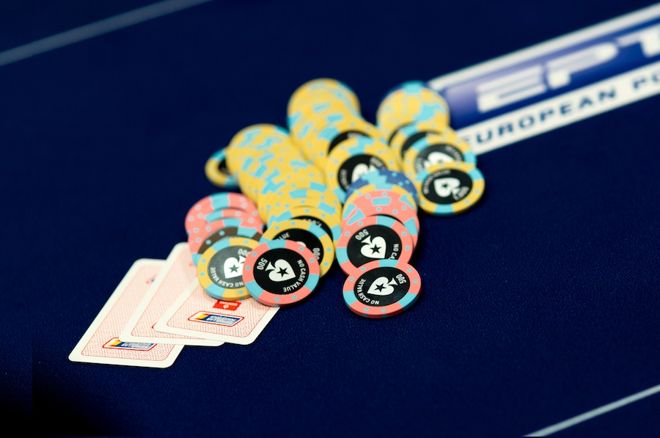The pot odds call in this scenario is a ratio of $100 to $50, or 2 to 1 pot odds. The formula for determining this is as follows: $ in main pot already + $ put into pot during current betting round. Learn how to calculate your pot odds and becoming a winning player. Learn how to calculate your pot odds and becoming a winning player. Pot Odds: 25% As we have already found out we have 17% chance of making the straight on the next card, which means that we should only call 17% of what is in the pot. Because we are being forced to pay 25% to play on, we should fold. We would be losing money in the long run if we called. $70 Winnings from a $10 bet with odds of 7:1 When the odds are particularly large against you winning, you'll often be referred to as the 'long shot', which generally means it will be a cold day in.
| Best Australian Poker Sites | ||
|---|---|---|
| Recommended | Bonus | Visit |
| 100% up to AUD $400 | www.888Poker.com | |
Calculating the pot odds in Texas holdem helps a gambler know when to fold or raise. The pot odds are a ratio between the current size of a poker pot and the cost of a call. Calculating this ratio allows gamblers to make informed decisions on the probability of winning and whether betting is worth the cost.
Once a player knows the pot odds, they can calculate the expected value of betting. This is helpful in several situations, none more so than when a player holds a drawing hand. This is a hand in which you are behind at the moment, but your have the promise of drawing a winning hand later.
Example of Pot Odds
To give an example, let’s assume the raise in front of you is $10. If the pot is $40, then the pot odds would be calculated like so: 40:10. Players often shorten this to 4:1. Converted to a ratio, you would have 1/5 or 20%. You would be putting in twenty percent of the pot.

Expected Value


Earlier we mentioned “expected value“. Expected value is a comparison between the pot odds and the chances you’ll draw the card you need. To calculate this ratio, you’ll need to figure out how many cards remain in the deck which might improve your hand.
Drawing Hands and Outs
“Outs” is the term used for the number of cards still in the deck which give you the winning hand. Besides your two hole cards and the community cards, you might know what 7 of the 52 cards are. If you have a straight draw of A-K-Q-J, then you need a 10 to make your straight. If no 10’s are in your hand or among the community cards, you have 4 outs. If one 10 was showing, you have 3 outs. This isn’t always the case with straight draws, though. For instance, if you hold a 6-7-8-9, you could win if you collected either a 10 or a 5. If neither card is showing, you have 8 outs.

A flush draw gives a player 9 outs (assuming you have 4 to a straight), if none of your suit have been drawn. It’s more likely one or two of your outs are gone, though. Let’s say you have the 3-6-9-Q of diamonds. You have 9 outs, but if you see the jack and 5 of diamonds among the community cards, you only have 7 outs. A straight flush is best, since you have 9 potential outs for suit and either 4 to 8 outs for card rank.
Calculating Outs
Once a player knows how many outs there are, they can calculate a ratio. If you have 4 outs after the flop, then you have a 4/46 chance of collecting an out (or just under a 9% chance) of hitting the card you need on any given dead. Keep in mind you’ll have two more cards drawn, instead of just one. The odds are 8.69% you’ll hit the card you need.
Calculating the outs you have produces a ratio of the chances you improve your hand. Since you can’t know what your opponent has in their hand, the math isn’t as cut-and-dried as it is on television, where the broadcasters have up-to-the-second information on hand composition and strength. Professional players often have an idea what their opponent is holding, depending on their tendencies and how they’ve played the hand.
Rule of 4 and 2
If you aren’t a math whiz and you need an easy way of calculating the outs, use Phil Gordon’s “rule of 4 and 2” (found in Gordon’s The Little Green Book). This rules states that you multiply your outs by one of these numbers to calculate the percentage odds of getting the card you need. If you’re on the flop waiting for the turn, multiply your outs by 2. If you’re on the turn waiting for the river, also multiply the outs by 2. If you’re on the flop waiting for the river–that is, your opponent is all-in–multiply the outs by 4.
Two things need to be emphasized. This is meant to be a shorthand, so it’s not entirely accurate. In the example above, the 8.69% becomes 8%. Those dividing 46 by 4 might round up to 9%, if they’re an optimist, so understand you lose a little something in perspective by using a quick method. Also, a gambler is going to be divining their outs by 2 most of the time, because they won’t be all-in on the flop that often. Some players mistakenly use the 4 every time they’re on the flop, which causes a whole lot of busts. If you don’t like fractions and long division, Phil Gordon’s method should help you get pretty close at a fast rate.
Implied Odds
Simply figuring out the current set of probabilities is not always enough. Sometimes, you want to calculate the probable future bets, too. Since gamblers calculating pot odds are dealing with probability and possibilities anyway, it’s sometimes a more accurate measure to project what’s likely to be the odds next round. Let’s use an example.
If you have a drawing hand, then you are going to fold if you miss the card you want. Therefore, you know you won’t be betting any higher in that scenario. At the same time, if you hit the card you want, your opponent or opponents are likely to bet and you’re likely to make money off them. You need to calculate the odds not just of the current ratio, but implied future odds.
Why Make Calculations?
Pot Odds In Holdem
Any time you fold, raise, or make a call in Texas holdem, you’re weighing the odds (in some informal fashion) of what you should do. Pot odds let you do the same thing in a formal, mathematical way. If guesswork is a pitfall in gambling, then odds calculations takes some of the guesswork out.
Hold'em Pot Odds
Risk versus Reward
The more information you have and can process, the better for you. Most of the time, you’ll have a vague idea of when it’s good to raise a bet and when it’s a bad idea. That’s not always the case, though.
Texas Holdem Pot Odds
When you don’t use precise math, you can make all sorts of mistakes and simply have fallacies about the game you just played. By doing the math on your pot odds, you eliminate some of the supposition. All of this can best be summed up as the risk/reward factor. Players want to know how much they need to risk and how much they’ll rake in if they win, so pot odds help you play a more mathematical game of Texas hold’em.
Holdem Poker Odds Chart
See also: